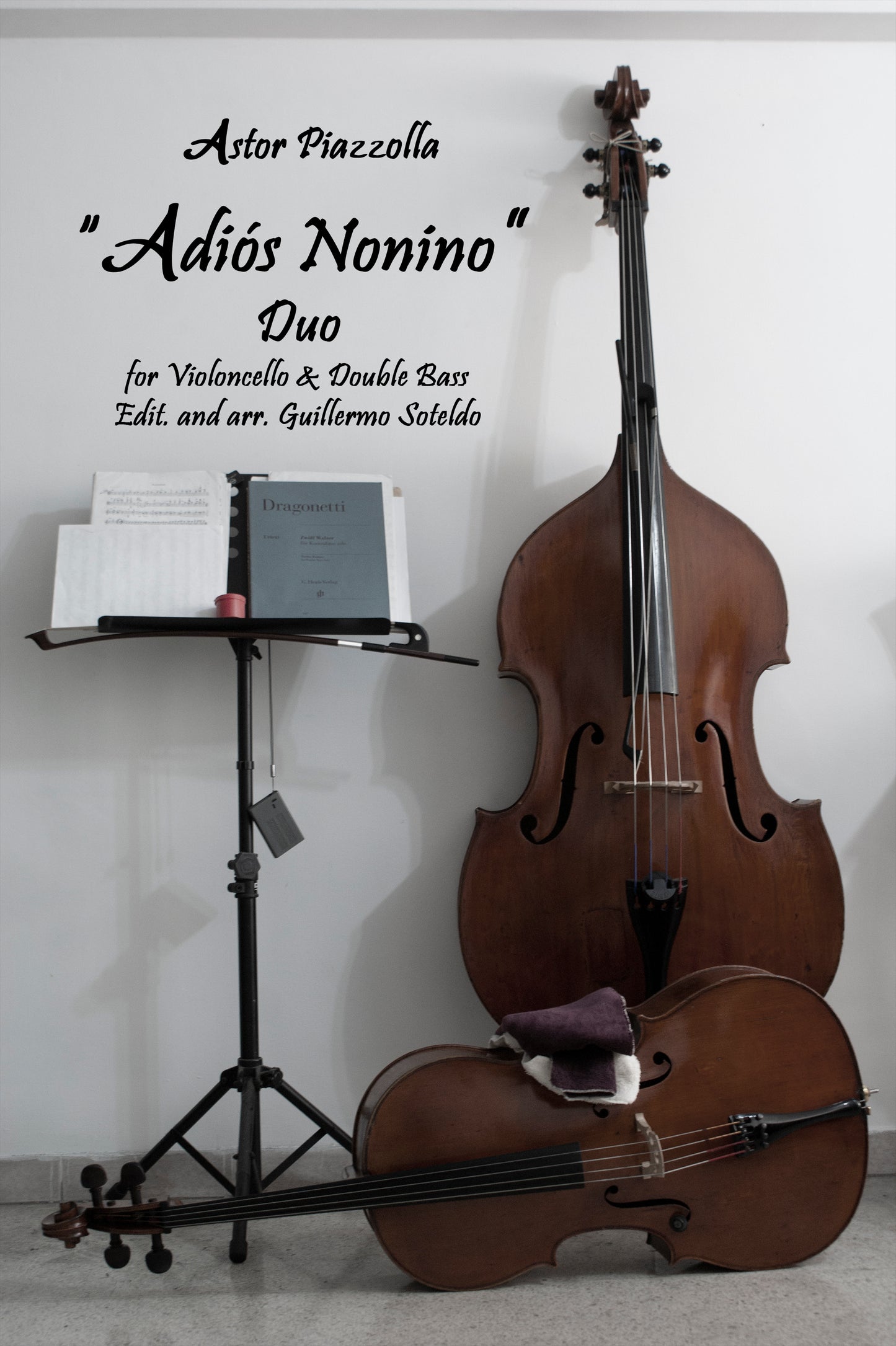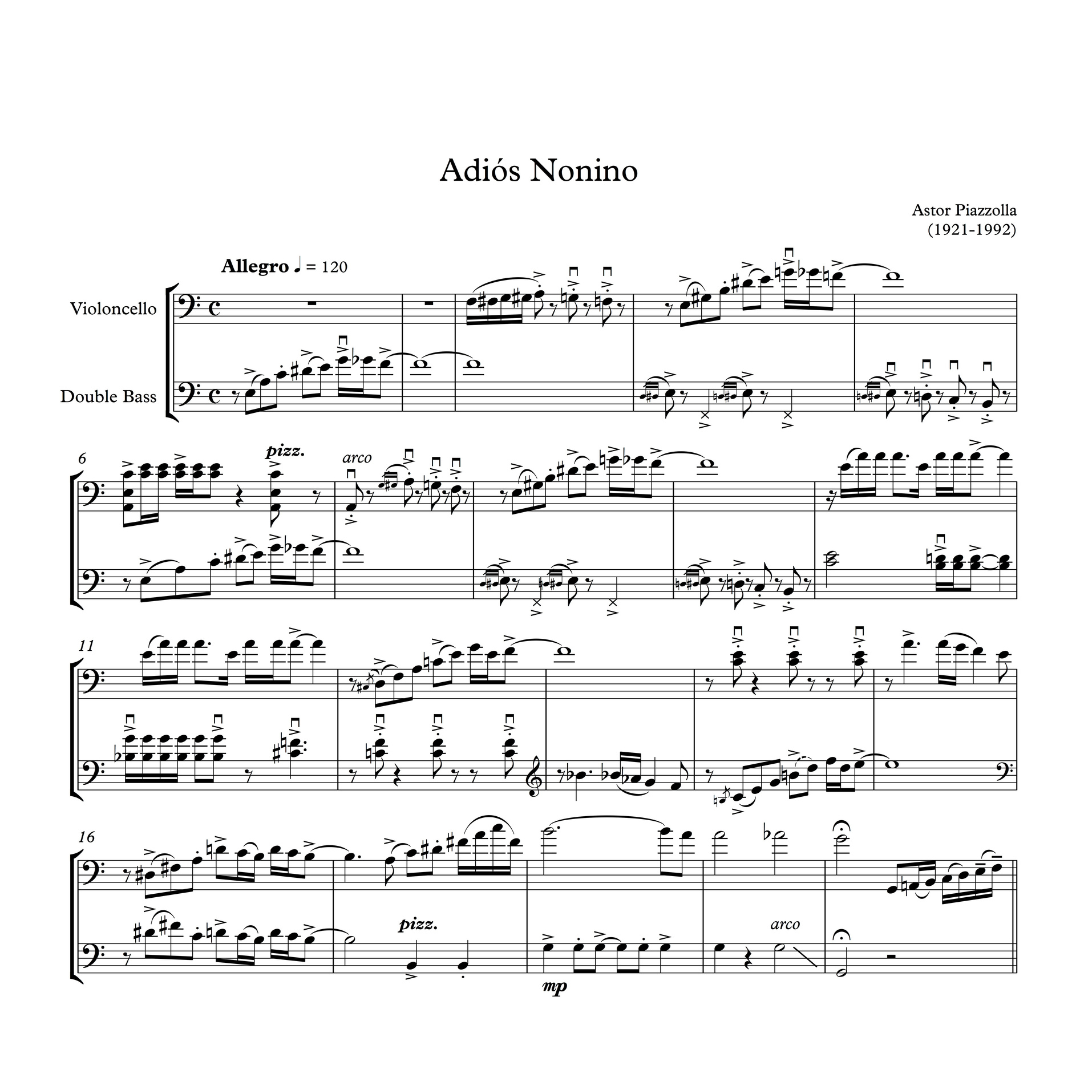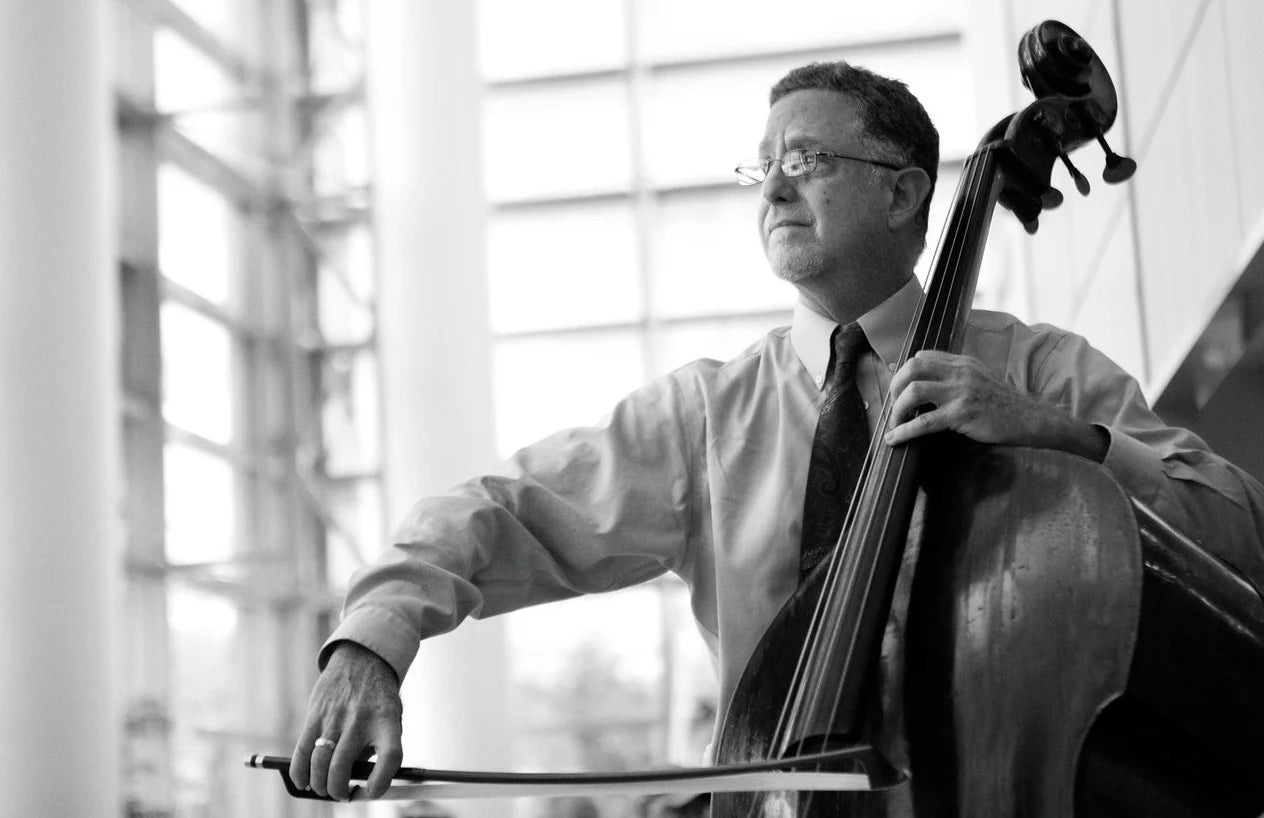Guillermo Soteldo
Piazzolla: Adiós Nonino Duo for violoncello and double bass (ed. Soteldo)
Piazzolla: Adiós Nonino Duo for violoncello and double bass (ed. Soteldo)
Couldn't load pickup availability
About the Edition
Guillermo Soteldo expertly arranges this piece for cello and double bass.
Your purchase includes a score, cello parts, and a double bass part in solo tuning and one whole step lower in orchestral tuning. You also receive audio files of the double bass and cello parts to practice independently with the accompanying part.
History the Composition
Rejected by traditional tango groups and almost ignored by labels records, in 1958, Piazzolla moved to the United States, where he began a project that he called Jazz-Tango.
He formed a quintet where they play pieces by Piazzolla, other Argentine tango composers, and jazz composers. With the particular musical aesthetic, this work is recorded in the album:
'Take me dancing!'
[G] 1959, New York City [P] 1959, TICO EE.UU.
Bandoneon, arr. –Astor Piazzolla,
Bass – Chet Amsterdam, George Duvivier Guitar – Barry Galbraith, Al Caiola
Percussion – Willie Rodríguez, Johnny Pacheco Piano – Carlos Raush
Vibraphone – Eddie Costa
However, Piazzolla is not satisfied with the result.
In 1959, while Piazzolla had a tour in Central America with the dancers Juan Carlos Copes and María Nieves, Rego received the news of his father's death during a show in Puerto Rico. This news, added to the tour failure, the financial problems, and the nostalgia for his country, led Piazzolla to depression. In October, upon returning to the place where he temporarily resided with his family in New York, he composed Adiós Nonino.
Dad asked us to leave him alone for a few hours. We went into the kitchen. First there was absolute silence. After a while, we heard the bandoneon playing. It was a very sad melody, terribly sad. He was composing “Adiós Nonino.” Daniel Piazzolla, son of Ástor. Astor, Diana Piazzolla, 1986
With these difficult circumstances, his stay in New York became unpleasant, and frustrated by his Jazz-Tango project, he decided to return to Buenos Aires. In 1960, he formed his 'Quinteto Nuevo Tango,' the group that had the greatest impact, and with it, he made many of his great works known.
This ensemble would become the pillar of future groups, and he would return every time he became frustrated with another project. The oldest unreleased live recordings date from this time was not until after his death that it went on sale in CD format. The top moment with his Quintet was the concert at the Philharmonic Hall in New York, where they played the Devil series and the pieces that completed the Angel series.





